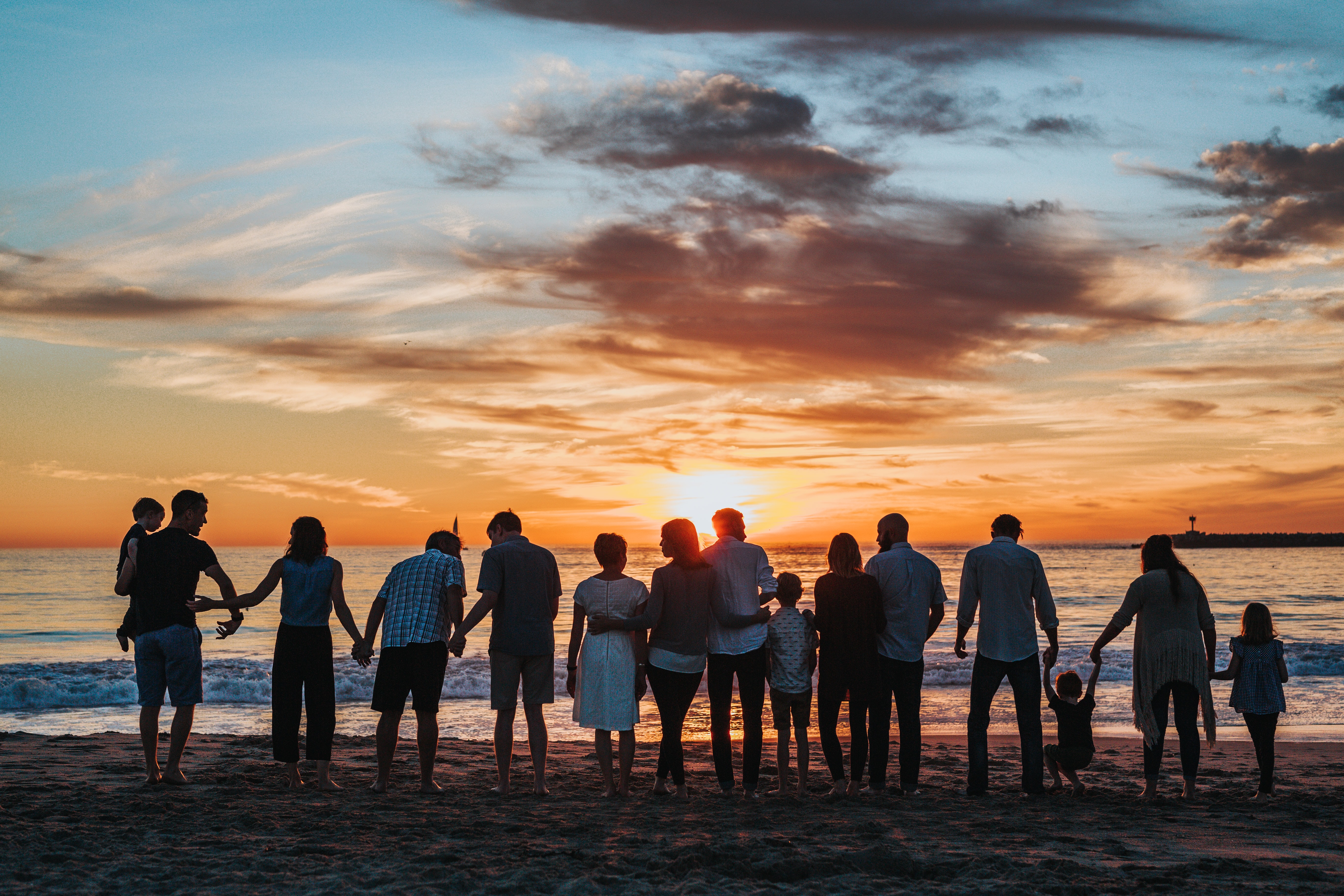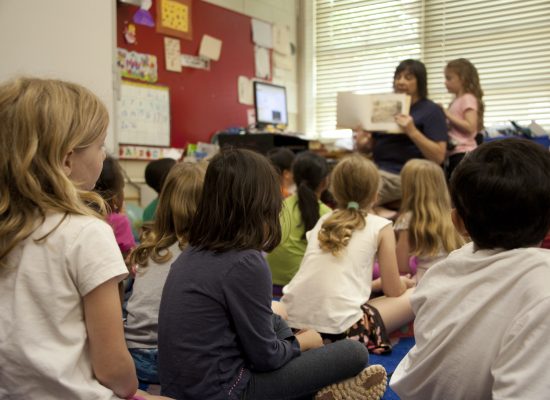
The month of March marks the 1-year anniversary of the COVID-19 pandemic bringing society to a screeching halt. It brought about significant changes in how we go about our lives, especially with our social connections. The relationships we have with others are central to the human experience and part of our identities. So, public health recommendations such as social (physical) distancing to slow the spread of the virus, forced us to adapt and find new ways to connect with others while doing our part for the community.
Keeping in regular contact with others is so important for us because it nourishes our need for connectedness.
Social-Emotional Learning (SEL) emphasizes that the quality of our social relationships is essential. Along those lines, two important concepts to remind ourselves are that the relationships outside of school, including those with our parents, siblings, friends, and partners are built on trust and security. We know that we can trust these individuals to be there for us when we need them to, and we are also aware that the relationship itself will persevere and last a long time (Furman & Buhrmester, 1985; Rotenberg, 2010). Having a relationship with someone with whom you can trust and develop a secure relationship is important for our well-being. For example, adolescents who reported greater security with their friends showed lower levels of anxiety (Wood et al., 2017) and friendship satisfaction (Persram et al., 2021). Moreover, youth who reported lower levels of trust with their parent had greater anxiety (Ebbert et al., 2019). In the case of siblings, adolescents who perceived they had a trusting relationship with their siblings reported greater self-esteem (Noel et al., 2018).
The pandemic has affected us in so many similar and different ways. However, our family, friends, and partners are still there to provide us with the support to know that we will be okay and get through this together. The message is the same regardless of whether we live with others or not. If living with others, conflicts are a normal part of relationships. It can be pretty easy to get on each other’s nerves when you spend the entire time with your family, for example. Make sure that you make time for yourself. It’s okay to disconnect from others and have some time set out just for you. That can also be helpful to reduce and minimize conflicts or other issues from getting worse. Living alone can be especially difficult, but it is so important to make sure to connect with others to reduce the feelings of loneliness that are only natural.
Relationships high in security and trust help us in so many different ways. Keeping in regular contact with others is so important for us because it nourishes our need for connectedness. It also shows the endurance and perseverance of those relationships, even in extraordinary times. Social (physical) distancing does not mean that we cannot still connect with our family and friends. It means that we have to be a bit more flexible in how we do so until we can see each other again. Until then, we are all in this together!
La valeur des relations familiales et des amitiés dans des temps extraordinaires
Le mois de mars marque le premier anniversaire de la pandémie de COVID-19 qui a bouleversé la société. Elle a apporté des changements importants dans la façon dont nous menons notre vie, en particulier dans nos relations sociales. Les relations que nous entretenons avec les autres sont essentielles à l’expérience humaine et font partie de notre identité. Ainsi, les recommandations de santé publique telles que la distanciation sociale (physique) pour ralentir la propagation du virus, nous ont obligés à nous adapter et à trouver de nouvelles façons de nous rapprocher des autres tout en faisant notre part pour la communauté.
Il est très important pour nous de rester en contact régulier avec les autres, car cela nourrit notre besoin de se sentir connectés.
L’apprentissage socio-affectif (ASA) souligne que la qualité de nos relations sociales est essentielle. À ce propos, il est important de se rappeler que les relations en dehors de l’école, y compris celles avec nos parents, nos frères et sœurs, nos amis et nos partenaires, sont fondées sur la confiance et la sécurité. Nous savons que nous pouvons faire confiance à ces personnes pour être là pour nous quand nous en avons besoin, et nous sommes également conscients que la relation elle-même persévérera et durera longtemps. (Furman & Buhrmester, 1985; Rotenberg, 2010). Avoir une relation avec quelqu’un en qui on peut avoir confiance et développer une relation sécurisante est important pour notre bien-être. Par exemple, les adolescents qui se sentent plus en sécurité avec leurs amis présentent moins d’anxiété (Wood et al., 2017) et sont plus satisfaits de leur amitié (Persram et al., 2021). De plus, les jeunes qui ont indiqué avoir moins confiance en leurs parents étaient plus anxieux (Ebbert et al., 2019). Dans le cas des frères et sœurs, les adolescents percevant une relation de confiance avec leurs frères et sœurs ont indiqué avoir une meilleure estime de soi (Noel et al., 2018).
La pandémie nous a touchés de tant de façons différentes et similaires. Cependant, notre famille, nos amis et nos partenaires sont toujours là pour nous apporter le soutien nécessaire pour savoir que nous nous en sortirons et que nous traverserons cette épreuve . Le message est le même, que nous vivions ou non avec d’autres personnes. Si l’on vit avec d’autres personnes, les conflits sont une partie normale des relations. Il peut être assez facile de se taper sur les nerfs lorsque vous passez tout votre temps avec votre famille, par exemple. Assurez-vous de prendre du temps pour vous. Il n’y a rien de mal à se déconnecter des autres et à se réserver du temps rien que pour soi. Cela peut également être utile pour réduire et minimiser les conflits ou autres problèmes qui pourraient s’aggraver. Vivre seul peut être particulièrement difficile, mais il est si important de s’assurer d’entrer en contact avec d’autres personnes pour réduire les sentiments de solitude qui sont tout à fait naturels.
Les relations fondées sur la sécurité et la confiance nous aident de nombreuses façons. Il est très important pour nous de rester en contact régulier avec les autres, car cela nourrit notre besoin de se sentir connectés. Elle montre également l’endurance et la persévérance de ces relations, même dans des moments extraordinaires. La distanciation sociale (physique) ne signifie pas que nous ne pouvons pas rester en contact avec notre famille et nos amis. Cela signifie que nous devons être un peu plus flexibles dans la manière de le faire jusqu’à ce que nous puissions nous revoir. Jusque-là, nous sommes tous dans le même bateau!
Ebbert, A. M., Infurna, F. J., & Luthar, S. S. (2019). Mapping developmental changes in perceived adolescent relationship quality throughout middle school and high school. Development and Psychopathology, 31(4), 1541-1556. https://doi.org/10.1017/S0954579418001219
Furman, W. and Buhrmester, D. (1985). Network of relationships inventory. In J. Touliatos, B.F. Perlmutter, & M.A. Straus (Eds.), Handbook of family measurement techniques (pp. 61–73). Sage.
Noel, V. A., Francis, S. E., & Tilley, M. A. (2018). An adapted measure of sibling attachment: Factor structure and internal consistency of the sibling attachment inventory in youth. Child Psychiatry and Human Development, 49, 217-224. https://doi.org/10.1007/s10578-017-0742-z
Persram, R. J., Schwartzman, E., & Bukowski, W. M. (2021). The concurrent association between friendship security and friendship satisfaction is moderated by experience within the family context. Merrill-Palmer Quarterly, 67(1), 56-75. https://doi.org/10.13110/merrpalmquar1982.67.1.0056
Rotenberg, K. J. (2010). The conceptualization of interpersonal trust: A basis, domain, and target framework. In K. Rotenberg (Ed.), Interpersonal trust during childhood and adolescence (pp. 2-27). Cambridge University Press.
Wood, M. A., Bukowski, W. M., & Santo, J. B. (2017). Friendship security, but not friendship intimacy, moderates the stability of anxiety during preadolescence. Journal of Clinical Child & Adolescent Psychology, 46(6), 798-809. https://doi.org/10.1080/15374416.2015.1094742



